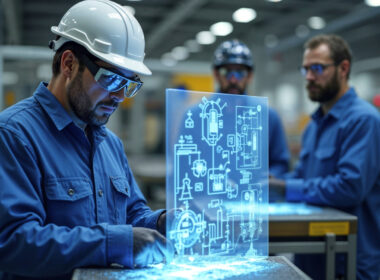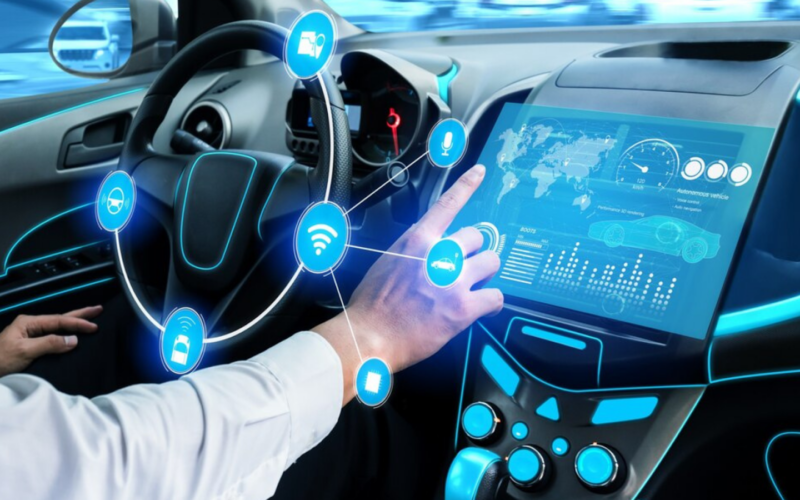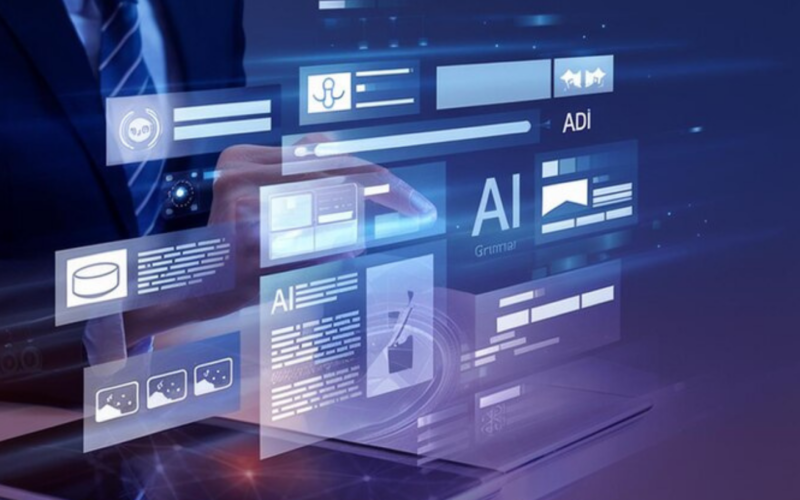As businesses face rising operational costs, inefficient processes, and the constant need to innovate, one technology stands out: the Internet of Things (IoT). From innovative manufacturing to predictive maintenance and offering a superior driving experience to your customers, IoT is rapidly reshaping how vehicles are designed, built, and utilized.
Well, it’s not just a futuristic concept; it’s happening right now. The global automotive IoT market is projected to rise from USD 153.44 billion in 2024 to USD 1094.12 billion by 2034, growing at a CAGR of 21.71% from 2025 to 2034. This rapid growth highlights the significant role IoT plays in the automotive industry.
But how exactly is IoT transforming the automotive sector, and what does it mean for businesses like yours? In this blog, we’ll explore how automotive IoT is driving change, the key use cases that are transforming vehicles, and how your business can benefit from embracing this technology.
Key Takeaways
- Connected Vehicles: IoT enables V2V, V2I, V2P, V2C, and V2E communication, optimizing routes, enhancing safety, and reducing costs. Real-time data sharing improves decision-making for businesses with fleets.
- Autonomous Vehicles: IoT powers self-driving cars with features like predictive maintenance and active safety systems. The technology is poised to bring about a revolution in the transport industry, with Level 5 automation eliminating the need for human intervention.
- Fleet Management Transformation: IoT enables fleet managers to track real-time vehicle data, optimize routes, and predict maintenance needs, improving efficiency and reducing downtime.
- IoT Challenges and Solutions: Automotive IoT faces challenges such as connectivity issues and cybersecurity risks, but solutions like the rollout of 5G, data encryption, and flexible system architectures can effectively mitigate these concerns.
What is Automotive IoT?
Automotive IoT refers to the integration of cloud-connected devices, such as sensors, cameras, GPS trackers, and telematics solutions, into vehicles. It enables real-time data collection for more intelligent and safer driving.
These connected devices communicate with each other, the vehicle, and external networks, unlocking applications that enhance safety, efficiency, and the overall driving experience.
For example, logistics companies like FedEx utilize IoT to track the location, fuel usage, and maintenance status of their fleet vehicles in real-time. This connectivity helps optimize routes, reduce costs, and prevent delays by addressing maintenance needs proactively.
Automotive IoT connects vehicles to the cloud, transforming the way car manufacturers, fleet operators, insurance companies, and OEMs manage and enhance their services.
Also Read: Basics of IoT Device Communication Methods: A Beginner’s Guide
With the basics of automotive IoT in mind, let’s explore its key use cases. These applications are driving innovation across the industry, from improved safety to optimized fleet management.
IoT in Automobiles: Major Use Cases
The key use cases of automotive IoT include connected vehicles, which optimize routes and improve safety by sharing real-time data, and predictive maintenance, which helps fleet managers reduce downtime and maintenance costs. IoT technologies are also enabling remote software updates, usage-based insurance, and innovative parking solutions.
To fully understand the impact of these advancements, let’s examine the specific use cases and how they can benefit your business.
1. Connected Vehicles
Automotive IoT enables vehicles to communicate with one another, pedestrians, and road infrastructure, such as traffic signals, thereby enhancing road safety and traffic efficiency. Key communication types include:
- V2V (Vehicle-to-Vehicle): Vehicles share data on location and speed to prevent accidents and enable emergency vehicles to move faster in traffic.
- V2P (Vehicle-to-Pedestrian): Vehicles alert pedestrians or cyclists via smartphones or wearables to prevent collisions.
- V2I (Vehicle-to-Infrastructure): Cars exchange data with traffic lights, road signs, and overhead RFID readers for optimized routes, setting speed limits, and more..
- V2C (Vehicle-to-cloud): Vehicles exchange data with cloud-based platforms for real-time traffic, remote diagnostics, weather, and software updates.
- V2E (Vehicle-to-Everything): Comprehensive communication that integrates V2V, V2P, V2I, and V2C.
How It Works: Connected cars utilize sensors to collect and share data in real-time, enabling drivers to make safer and more efficient decisions. These vehicles create an interconnected network that enhances overall transportation.
Why It Matters to SMEs: For SMEs with fleets, connected vehicles can optimize routes, enhance safety, and lower costs. For example, delivery services can use real-time traffic and weather data to save time and fuel while ensuring safer driving conditions.
2. Autonomous Vehicles
Autonomous vehicles, powered by IoT, can drive without human intervention, thanks to advanced driver assistance systems (ADAS), sensors, cameras, and AI algorithms. Active safety mechanisms include emergency braking, distraction prevention, and alcohol interlock devices.
These vehicles rely on data from radars, LiDAR, and GPS to navigate and make real-time decisions, such as lane changes and parking.
The Five Levels of Automation
- Level 1: Basic driver assistance systems (e.g., lane centering, cruise control).
- Level 2: Advanced systems like adaptive cruise control and lane centering. Drivers still need to monitor the vehicle.
- Level 3: Partial automation with self-driving capabilities under specific conditions, such as slow driving in traffic jams.
- Level 4: High-level automation with the possibility of driverless taxis. Human intervention is only needed in rare situations.
- Level 5: Full automation with no human input required at all.
Pro Tip: For logistics companies or fleet operators, autonomous vehicles can enable 24/7 driving, improve route efficiency, and reduce the need for drivers. This lowers operational costs and ensures consistent service delivery.
Also Read: AI and Its Use in Autonomous Vehicles
3. Fleet Management
IoT has transformed fleet management by enabling real-time data collection and analysis. Modern vehicles, equipped with sensors for weight, location tracking, and vehicle performance, provide fleet managers with valuable insights through cloud-based applications.
How It Works: IoT sensors collect data on vehicle performance, fuel efficiency, and even cargo conditions. This data is stored and analyzed in cloud applications, providing fleet managers a visual, easy-to-understand dashboard. The result? Enhanced decision-making and optimized fleet operations.
Example: With IoT vehicles, a small delivery service can track its performance and automatically adjust routes based on traffic conditions and cargo weight. This improves delivery times and ensures better resource allocation.
4. Predictive Maintenance
Predictive maintenance is one of the most valuable applications of IoT in the automotive industry. IoT cars have sensors embedded in various parts that collect performance data, which is then transferred to the cloud for analysis.
This data enables automotive companies and fleet managers to predict when parts require servicing or replacement, thereby reducing downtime and preventing unexpected failures.
How It Works
- Data Collection: Sensors collect data on various components, including engine temperature, tire pressure, vibration, and oil levels.
- Cloud Analytics: This data is sent to the cloud, where predictive analytics assess component conditions and identify signs of wear and tear or failure.
- Forecasting: The system predicts when parts need maintenance or replacement, helping avoid unnecessary repairs and extend the vehicle’s lifespan.
Example: Suppose a small delivery business operates a fleet of vans. Using IoT-powered predictive maintenance, the fleet manager receives real-time alerts whenever a vehicle’s tire pressure is low or the engine shows signs of wear. Instead of waiting for a breakdown, the manager can schedule a service appointment before the issue becomes critical.
Did You Know? IoT sensors can also help manage inventory more effectively by notifying mechanics and dealerships about upcoming repairs, optimizing stock levels, and reducing unnecessary costs.
5. In-Car Infotainment Systems
Modern in-car entertainment systems are far more advanced than the simple radio and CD player. With the power of IoT, these systems now offer a connected experience for both drivers and passengers.
Examples like Kia’s UVO, Jeep’s Uconnect, and mobile-compatible systems like Apple’s CarPlay and Android Auto offer drivers enhanced functionality. Here’s what they usually offer.
Key Features
- Music & Video Streaming: Access to platforms like Spotify, Pandora, and Netflix.
- Voice Assistants: Hands-free calls, text messaging, and navigation via voice commands through Siri, Alexa, etc.
- Intelligent Connectivity: Integration with smartphones for seamless connectivity.
- Real-Time Updates: Weather conditions, traffic updates, points of interest, diversions.
- Climate & Seat Control: Adjust car settings, such as temperature, seat position, and steering wheel, with a touch or voice command.
6. Remote Software Updates
IoT connectivity is transforming how cars receive software updates, simplifying the process for both drivers and manufacturers. Traditionally, vehicle software updates required a trip to the dealer, causing inconvenience for consumers and adding costs for manufacturers.
However, vehicular IoT now allows for over-the-air (OTA) updates. Here’s how they operate.
How OTA Updates Work
- Software-Related Fixes: Issues like non-working headsets or malfunctioning control units can be fixed remotely through OTA updates.
- Performance Enhancements: Automakers, such as Tesla, utilise OTA to enhance vehicle performance, including improvements to battery efficiency and upgrades to suspension systems.
Why It Matters to SMEs: For SMEs in the automotive service industry, IoT-driven OTA updates reduce the need for costly service visits. For example, a fleet operator can ensure all vehicles receive the latest software enhancements remotely without interrupting operations.
Did You Know? When a new vulnerability is identified, IoT-connected software allows manufacturers to distribute security patches instantly, reducing the risk of system breaches.
7. Usage-based Insurance
IoT in vehicles is transforming the insurance industry by enabling usage-based insurance (UBI). With IoT sensors tracking key driving behaviors such as speed, acceleration, braking patterns, and even phone usage, insurers can customize premiums to individual driving habits.
Therefore, careful drivers pay less, while riskier ones have a greater probability of facing higher premiums.
Pro Tip: IoT-powered usage-based insurance can help SMEs save on fleet management costs by offering personalized premiums based on actual driving behavior, incentivizing safer driving while reducing overall insurance expenses.
8. Simplified Parking
Automotive IoT provides a solution to parking problems by utilizing real-time mapping data to locate available parking spaces. This data is gathered from sensors, GPS systems, and cloud platforms, enabling drivers to efficiently find and navigate to open parking spots, thereby reducing the time spent searching for parking.
The market is already recognizing this potential, with smart parking projected to be worth over $16 million by 2028.
Why It Matters to SMEs: For SMEs with fleets or delivery services, IoT-driven smart parking can significantly reduce the time spent searching for parking, improving efficiency and cutting costs. For example, a delivery company using connected cars can streamline parking in busy urban areas, enabling faster deliveries.
9. Driver Monitoring System
A Driver Monitoring System (DMS), using low-power in-vehicle cameras and advanced vision technologies, tracks driver behavior and actions to prevent accidents. Here’s a quick overview of its working mechanism.
Key Features
- Driver Behaviour Analysis: Detects signs of drowsiness, aggressive driving, and distractions, including texting. The system alerts the driver via SMS, sounds, visuals, or vibrations, ensuring they stay focused.
- Driver Position Monitoring: Ensures the driver is wearing a seatbelt and seated correctly for optimal airbag deployment. Custom alerts can be set for improper seating.
- In-Cabin Occupancy Detection: Monitors cabin occupancy and sends notifications if passengers are missing, enhancing safety and ensuring no one is left behind.
Example: A fleet operator can utilize this technology to monitor driver behavior and detect expressions of fatigue or distraction, enabling timely intervention. This reduces liability, enhances safety, and improves delivery accuracy.
With the use cases in mind, let’s now look at how these automotive IoT technologies can deliver tangible benefits for your business.
Benefits of IoT in the Automobile Industry: Enhancing Safety, Efficiency, and Cost Savings
Automotive IoT is transforming the way vehicles are manufactured, operated, and maintained. By integrating IoT technologies into vehicles, both manufacturers and drivers can unlock a range of benefits, from enhanced safety to cost savings.
Below you will find the key benefits of automotive IoT:
| Benefit | Description |
| Enhanced Safety | IoT technologies enable collision avoidance, lane-keeping assistance, and adaptive cruise control, significantly improving road safety. |
| Reduced Maintenance Costs | IoT sensors help drivers and manufacturers identify issues before they lead to breakdowns, thereby minimizing repair costs. |
| Optimized Manufacturing | IoT improves the efficiency of the car manufacturing process by reducing human errors, automating tasks, and enabling proactive maintenance on factory equipment. |
| Improved User Experience | Personalized infotainment systems, seat and climate control adjustments, and connectivity with smart home devices offer a seamless in-car experience. |
| Fuel Efficiency | IoT systems monitor driving behavior and fuel consumption, enabling more efficient driving practices and helping reduce fuel costs. |
| Better Traffic Management | IoT data helps urban planners optimize traffic flow by monitoring congestion, enabling adjustments to traffic light timings, and road planning. |
| Optimized Route Planning | Real-time traffic and weather data allow drivers and fleet managers to avoid congestion, reducing travel time and fuel consumption. |
| Remote Vehicle Control | IoT enables features like remote start/stop, door locking/unlocking, and geofencing, improving vehicle security and management. |
Embracing these technologies can give your business a competitive edge while providing safer, more reliable services to your customers.
Read our blog on Emerging IoT Trends and Technologies to Watch in 2025 to find out more benefits that IoT has in store.
Let’s now examine some of the significant challenges associated with implementing IoT in cars.
Key Challenges in Automotive IoT and Their Solutions
Automotive IoT brings significant advancements but also presents challenges like connectivity issues and cybersecurity risks. Addressing these concerns through the rollout of 5G and strict data security measures will be key to maximizing the potential of IoT in the automotive sector.
Here’s a closer look at these challenges and their solutions.
- Connectivity Issues: High-bandwidth connectivity is essential for autonomous driving. Even a minor loss of connection can cause navigation failure or accidents.
Solution: The rollout of 5G, and its successor, 6G, will provide reliable and fast connectivity, ensuring vehicles remain connected even in remote or rural areas.
- Cybersecurity: Connected vehicles are vulnerable to cyberattacks, which can compromise sensitive data and vehicle safety. Hackers can access control systems, potentially causing accidents.
Solution: Implementing stronger cybersecurity regulations, performing regular penetration tests, and adopting foolproof, end-to-end data encryption protocols can protect against unauthorized access.
- Ethical and Social Considerations: IoT raises privacy concerns, increased surveillance, and ethical issues, especially with self-driving cars making decisions in critical situations.
Solution: Transparent algorithms, clear communication on decision-making, and consideration of ethical implications should be prioritized to ensure the responsible implementation of IoT in cars.
- Lack of Technology Uniformity: Different manufacturers employ varying communication protocols and operating systems, resulting in compatibility issues for fleet management.
Solution: Designing flexible IoT systems with standardized data formats and protocols will simplify integration across manufacturers and fleet management systems, thereby enhancing interoperability.
- Harsh Conditions: Extreme weather conditions or remote locations can disrupt IoT systems due to poor connectivity, which in turn affects their functionality.
Solution: Reducing the volume of transmitted data, using thick clients (for local processing), and buffering data can ensure stable IoT performance.
- Liability in Accidents: The introduction of self-driving cars complicates the issue of liability in accidents. It’s unclear who should be held responsible: car manufacturers, software developers, or vehicle owners.
Solution: Clear legal frameworks and updated insurance policies are necessary to define liability in the context of IoT-enabled vehicles.
- Data Ownership and Usage: Connected cars generate vast amounts of valuable data, raising questions about who owns and controls the data.
Solution: A comprehensive framework for data ownership, user consent, and data protection should be established to safeguard privacy and ensure proper usage.
Facing challenges with connectivity, security, or fleet management integration with a one-size-fits-all solution?
Our custom software development services offer tailored solutions to address the unique automotive IoT challenges.
Schedule a consultation to explore how our solutions can address your specific challenges, ensure seamless integration, and drive operational success.
As you tackle the challenges of implementing Automotive IoT, it’s essential to have the right partner, such as Codewave, to ensure smooth integration and optimization.
Custom IoT Solutions for Your Business: Why Codewave is the Right Choice
At Codewave, we specialize in crafting customized Automotive IoT solutions that seamlessly integrate with vehicle operations, enhancing both efficiency and safety. From connected vehicles to predictive maintenance and real-time data analytics, our IoT platforms are designed to improve performance and drive innovation in the automotive industry.
Our Key Offerings:
- Automotive IoT Strategy and Consulting: We help design IoT strategies for connected vehicles, such as optimizing fleet routes using real-time traffic data, to ensure enhanced efficiency and cost savings.
- End-to-End Automotive IoT Solution Development: We integrate IoT sensors in vehicles and develop cloud-based fleet management platforms. This way, we can create solutions that connect vehicles and provide actionable insights, such as predicting maintenance needs.
- Data Analytics and Visualization: Our IoT solutions visualize real-time vehicle performance data, including vehicle location, performance metrics, and maintenance alerts, enabling fleet managers to track fuel consumption, driver behaviour, and optimize routes for faster deliveries.
- Security Implementation: We implement strict security features, including encryption of communication between vehicles and the cloud, to ensure data privacy and protect against potential cyber threats.
- AI and Machine Learning Integration: Our services include integrating AI and ML to predict vehicle breakdowns based on sensor data, enabling proactive maintenance and reducing fleet downtime.
- Performance Optimization and Maintenance: We optimize IoT applications to ensure smooth real-time data flow between vehicles and cloud platforms, minimizing interruptions and ensuring accurate performance tracking.
Struggling with connectivity issues, cybersecurity risks, or integrating IoT systems across your fleet? Our Automotive IoT solutions can provide real-time data insights, enhance vehicle security, and optimize route planning.
Glance through our portfolio to see how we’ve helped businesses overcome similar hurdles in automotive IoT development.
Schedule a call with one of our experts to explore how our customized IoT development services can reduce downtime and operational costs. Let’s drive efficiency and transform your fleet operations.
FAQs
Question 1: What are the main protocols used in IoT-enabled cars?
IoT-enabled cars utilize protocols like MQTT (Message Queuing Telemetry Transport) for lightweight messaging, CoAP (Constrained Application Protocol) for constrained devices, Bluetooth/BLE for in-car device connectivity, and DSRC (Dedicated Short-Range Communications) for V2E communication.
Question 2: What is the future of automotive IoT?
The future of automotive IoT is driven by advancements in 5G connectivity, enabling real-time data exchange for autonomous driving, predictive maintenance, and enhanced in-car experiences, ultimately leading to smarter, safer, and more efficient vehicles.
Question 3: How does Automotive IoT help in road condition analysis and navigation assistance?
Automotive IoT enables vehicle-to-infrastructure (V2I) communication and onboard sensors to detect road conditions, such as potholes and slippery surfaces, providing real-time navigation assistance and enhancing driver safety.
Question 4: What regulatory compliances are available for the IoT in the automotive industry in the USA?
In the USA, automotive IoT must comply with regulations such as ISO/SAE 21434 for cybersecurity, UNECE WP.29 R155 and R156 for software updates, and California’s SB 1394 for data privacy.
Question 5: How do car-sharing and ride-sharing businesses benefit from Automotive IoT?
Car-sharing and ride-sharing services benefit from automotive IoT through real-time vehicle tracking, predictive maintenance, and optimized routing. Studies show IoT reduces downtime by 13.2%, improves operational efficiency, and lowers costs.
Codewave is a UX first design thinking & digital transformation services company, designing & engineering innovative mobile apps, cloud, & edge solutions.







